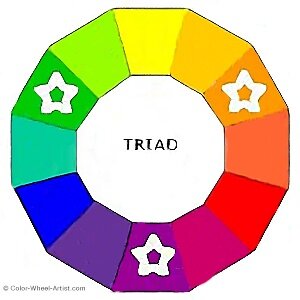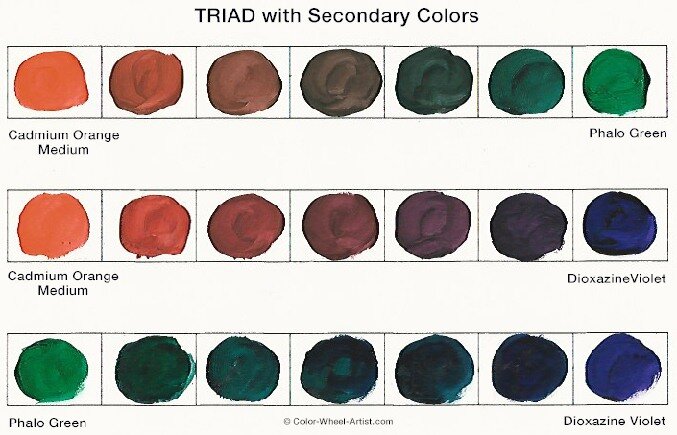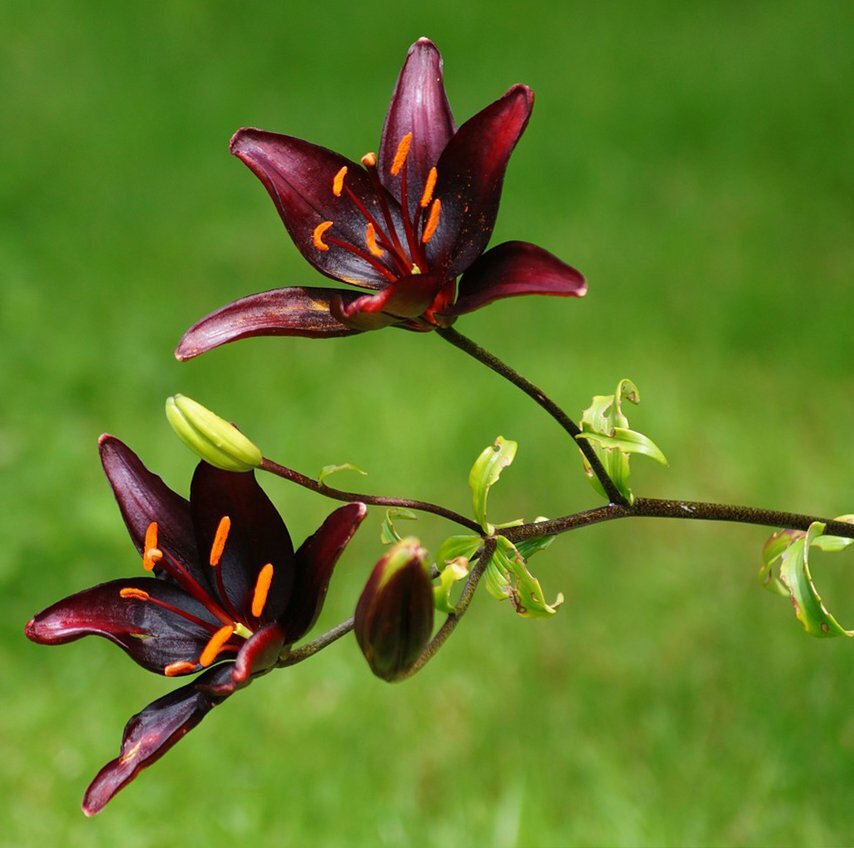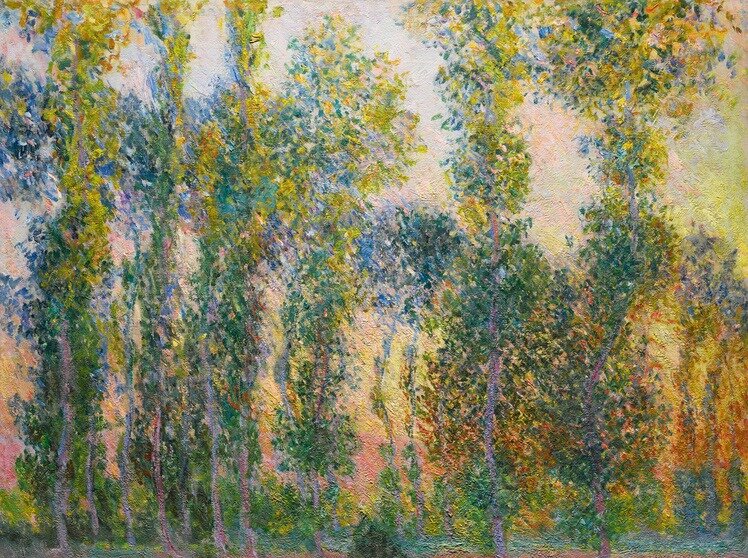
A Triad Color Scheme traditionally uses three Hues that are evenly spaced around the Color Wheel. Above, you can see every fourth color has been selected, leaving three colors between each.
Of course there are other types of Triad Color Schemes such as the Complementary Triad and Modified Triad. However, here we are taking a look at the most basic. Once you've mastered this traditional Triad Color Scheme, the others are simple to use. Let me show you how three colors can help you create harmony in any creative project.
More...
Two Groups of Triad Colors
Generally, to get the cleanest color mixtures, it's wise to stay clear of using the Tertiary Colors for a Triad Color Scheme. That's because the Tertiary colors are already mixtures of three colors. As a result, if you blend them with other Tertiary colors they will quickly become muddy. However, it's great to use them as slightly mixed accents once you're familiar with the basic color palette.
As a result of avoiding the Tertiary colors as your main Triad Color Scheme, you are left with two choices. Therefore, you will be working with either three Primary Colors or three Secondary Colors.

First of all, as you learned earlier, when you mix Primary Colors, you get a gorgeous range of Secondary colors.
To review: Yellow + Red = Orange, Yellow + Blue = Green and Red + Blue = Purple.
In my example above, the Primary Triad was mixed from the three pure Hues. Obviously these pigments usually produce the most vibrant mixtures. However, bear in mind that you can use any other Yellow, Red and Blue you might have in your paint box. Of course, your mixtures will not look exactly the same as mine when you use other pigments.

Now compare the Primary Triad with our second example above. As you might have guessed, choosing three Secondary colors for your Triad gives you a whole different result. Notice how the Secondary mixture colors are more subdued and earthy. Keep this in mind when this is the effect you're wanting to achieve.
Painting aTriad Color Scheme From a Photo

In our first creative example, the photograph to the left, demonstrates a perfect Triad Color Scheme using the three Secondary Colors.
Indeed, if you wanted to paint from this photograph, you'd choose Green as the dominant Hue.
Next, to achieve the lovely range of subdued Purple colors and near Blacks of the flower petals, you would simply mix a bit of Green into the Purple.
And finally, the Green background would also have a touch of Orange mixed in for painterly variation. Notice the lovely vibrant Orange stamens in the flowers. They add a wonderful accent to the entire composition.
Triad Color Scheme Example in Fine Art

Above is another example of the same palette with a completely different emotional impact.
This stunning Impressionist painting by Claude Monet, uses the same Triad paint palette of Green, Orange and Purple as the flower photo above. In contrast, Monet was a genius at mixing his colors in a more painterly manner. His technique was to mix his pigments right on the canvas. As a result, the slightly blended colors create the brilliant sparkle of leaves in the morning light.
After looking at this painting closely, it appears his dominant color was likely Orange. This warm Orange is why there is an overall warming effect on both Green and Violet. The Violet in the sky and tree trunks is a warm but subdued Gray/Violet. This lovely Gray/Violet is the result of adding a bit of Orange and White to the Purple.
Painting Tips for Triad Color Schemes
* When you mix all three colors of your Triad together, you will create a wide range of Neutrals that harmonize with your palette. Add White or Gray to these for even more variety.
* Remember that your initial mixtures, as shown at the top of this post are the starting point. You will achieve an endless variety of Tints, Tones and Shades, by adding White, Gray or Black.
* Your colors will be much more harmonious if you choose one of the colors in your selected Triad as the Dominant color.
* You don't need to work with just three colors. For example, you might use a cool and a warm of each Hue, or several different versions of one Hue. The variety of approaches is endless and entirely up to you.
* You also don't need to work with all the mixtures of the three colors. Select a range instead, especially with the Primary Triad, otherwise the results can be overwhelming.
* Your color mixtures will look even better when you add a tiny speck of your Dominant color to each pigment as you paint.
* As always, painting will be more fun and spontaneous if you're familiar with how your colors interact first. Before you begin, test your colors in your sketchbook or worksheet.
Let's Review What You Learned
- A Traditional Triad Color Scheme uses three evenly spaced Hues on the Basic Color Wheel. In other words, every fourth color is selected.
- Naturally, there are other types of Triads, which we'll learn about later on.
- Tertiary Triads create very neutralized mixtures and are therefore the most difficult to control.
- As we have seen, you can choose either a Primary Triad or a Secondary Triad. Although the choices seem limited, there are endless variations.
- Primary Triad colors create bright Secondary colors when blended. Secondary Triad colors are already mixed and will produce less intense colors when blended together.

